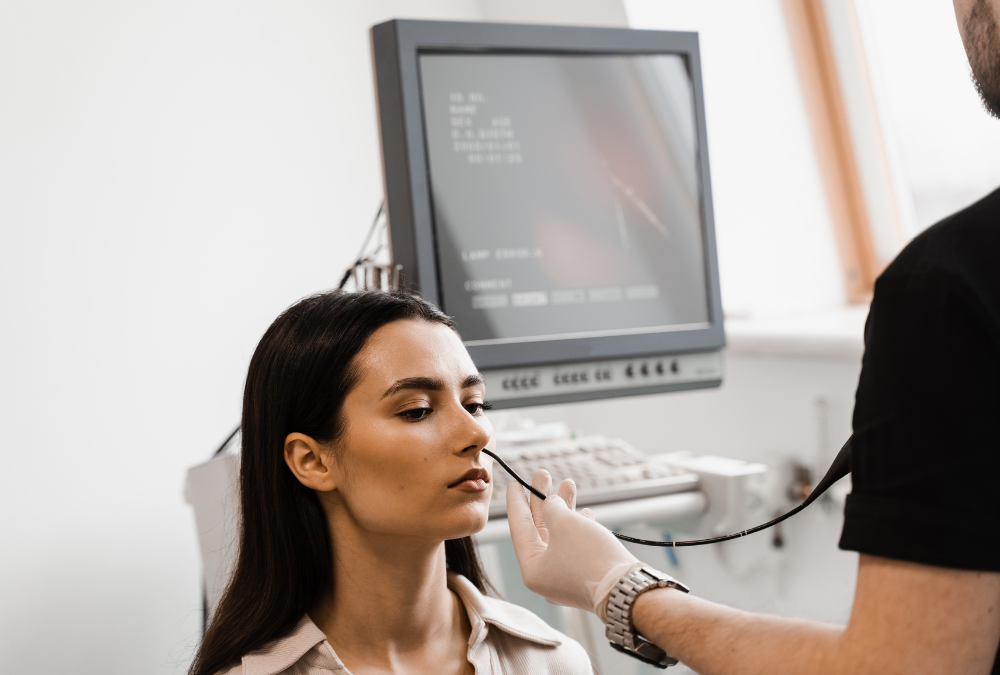Constant congestion, facial pressure, and headaches can affect everything, from your sleeping habits to your ability to concentrate. Not to mention, it can be frustrating when sinusitis or sinus infection medications don’t work and these symptoms keep returning.
Thankfully, there is a treatment option that offers long-term relief without surgery: a balloon sinuplasty. But before you schedule a balloon sinuplasty in Irvine, CA, take some time to examine the benefits and risks so you can make a well-informed decision.
Explanation of Balloon Sinuplasty
A balloon sinuplasty is a safe, minimally invasive procedure that addresses chronic sinusitis, chronic sinus infections, nasal inflammation, and/or blockages. An ENT specialist uses local anesthesia to numb the area before inserting a catheter into the sinuses. They then inflate the balloon to gently open and unblock the nasal passages. Before removing the catheter, they’ll flush out the sinuses to thin and clear the trapped mucus.
This entire process takes anywhere from 45 minutes to two hours, which includes the preparation and post-op evaluation. The patient is awake for the entire procedure. Symptom relief is immediate and within 24 hours, they can return to their daily routine.
The quick recovery time makes balloon sinuplasty an ideal alternative to more traditional treatment options. For example, endoscopic sinus surgery requires general anesthesia and involves the surgeon shaving down or removing nasal tissue resulting in a much longer recovery time for patients. Surgical procedures also have a higher risk of complications.
The Success Rate of Balloon Sinuplasty
Overall, balloon sinuplasty is an incredibly safe procedure with impressive results. A recent NIH report compiled results from different balloon sinuplasty studies, and the results were impressive. One study found zero adverse events and a 98% efficacy rate six months after the operation.
Another study reported a complication rate of 5.26% for balloon sinuplasty, which is over 2% lower than those associated with traditional endoscopic sinus surgery. Revision rates for balloon sinuplasty were significantly lower than those associated with endoscopic sinus surgery: 7.89% compared to 16.85%. In other words, balloon sinuplasty has extremely high success rates and minimal complications when compared to traditional methods.
General Risks and Complications
Despite these impressive results, balloon sinuplasty does come with the following risks:
- Infection: Infection risks increase with poor hygiene and self-care after the balloon sinuplasty. For example, if the patient doesn’t use a sinus rinse, bacteria could stay in the sinuses and cause an infection.
- Bleeding: Light bleeding is common after sinus treatment procedures. Bleeding that doesn’t stop within 24 hours could be a sign of complications.
- Sinusitis recurrence: Balloon sinuplasty is a long-lasting and effective procedure. However, sinusitis can come back after the procedure. As mentioned above, the probability of this happening is extremely low (less than 8%).
Procedure-Specific Risks
According to a 2020 NIH report, there are two primary types of procedure-specific risks associated with balloon sinuplasty:
- Patient-related (accounts for 48.3% of adverse events)
- Device-related (accounts for 47.9% of adverse events)
The most common patient-related risk is a cerebrospinal fluid leak, which occurs when there’s a hole in the tissue surrounding the brain. This can cause headaches, infection, and nasal drainage. Other patient risks include eye swelling and epistaxis (excessive nose bleeding).
About half of the reported risks are device complications, such as a catheter or balloon malfunction. Another issue is imprecise navigation when inserting the balloon catheter.
Patient-Specific Risks
Some people have sensitivities or allergies to materials and medications, which puts them at risk. For example, patients may be allergic to latex, metals, and silicon medical equipment. While extremely rare, adverse reactions to anesthesia do occur and can complicate the procedure. Other contraindications include heart disease, lung conditions, diabetes, and seizure disorders. These issues put patients at a higher risk for anesthesia complications.
The good news is that balloon sinuplasty specialists take precautions to minimize allergy, adverse reaction, and medical complication risks for patients. Patients should always share their complete medical history with their ENT specialist before scheduling a balloon sinuplasty.
Managing Balloon Sinuplasty Risks and Complications

Online testimonials and reviews highlight the surgeon’s experience and past results. Patients should also seek referrals from their general practitioner or friends who have had balloon sinuplasty in the past.
Once the patient has chosen an experienced balloon sinuplasty specialist, they’ll learn pre- and post-op care recommendations to manage any potential risks and complications. They’ll also receive a personalized procedural approach based on the patient’s medical history, allergies, and overall health. This often includes regular follow-up appointments so the specialist can monitor the patient’s progress and identify any complications early on.
Decision-Making and Informed Consent
The ENT specialist will clearly explain the entire procedure, potential complications, and risk management approach to patients in advance. There is usually one appointment between the initial consultation and balloon sinuplasty procedure so patients can have an open dialogue with the surgeon about what to expect before, during, and after the balloon sinuplasty.
Conclusion
All medical procedures come with procedural and patient-specific risks. The good thing is that the balloon sinuplasty risks are minimal, especially compared to traditional treatment options like endoscopic sinus surgery.
If you are considering balloon sinuplasty, schedule a consultation with an experienced ENT surgeon. Make sure you share your complete medical history to foster an open dialogue about procedural expectations.

